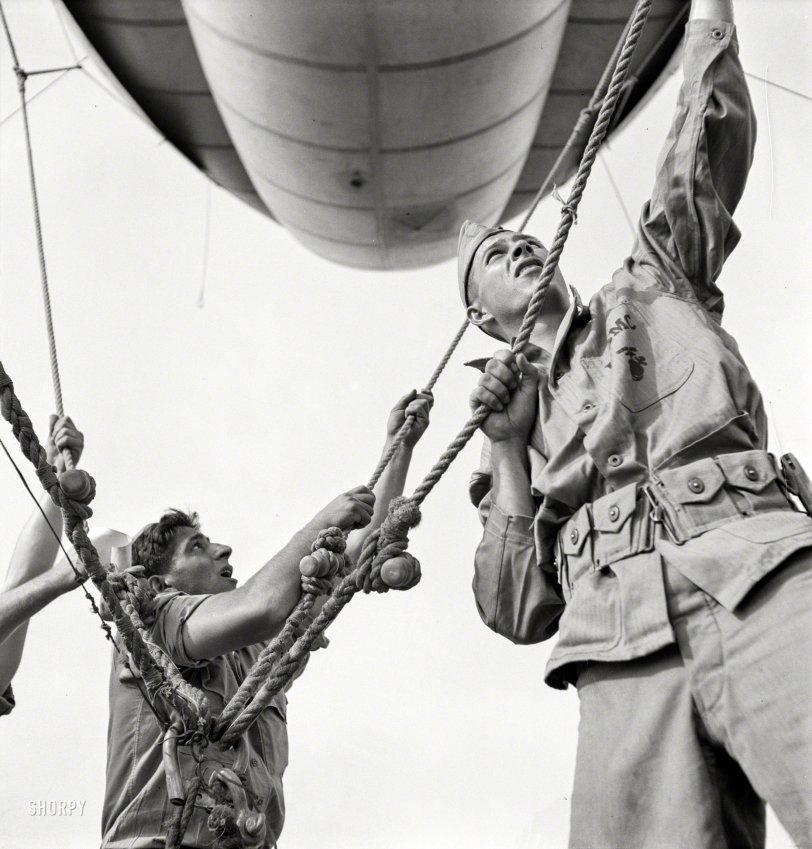


Framed or unframed, desk size to sofa size, printed by us in Arizona and Alabama since 2007. Explore now.
Shorpy is funded by you. Patreon contributors get an ad-free experience.
Learn more.

- Roll your own
- Rugged and real!
- A Charles Purcell - Mama Cass Connection
- Uncle SAAM
- Obfuscation
- One Chocolate Soldier rode away
- Victor Marquis de la Roche
- The Little House Across Way ...
- Vanderbilt Gates
- Vanderbilt Mansion
- You can still see that gate
- Withering heights for me
- So Jim,
- Top Heavy
- Re: Can't Place It.
- Bus ID
- Since you mention it
- The White Pages ?
- Moonlight Tower
- 1907?
- Fire(men) and Water
- Can't Place It
- Can anyone
- Wings
- Where's Claudette and Clark?
- Overbuilt Rolodex
- One song
- Give Me Wings Please!
- PRR
- Pinball Wizards
Printporium
Balloon Jockeys: 1942

May 1942. Parris Island, South Carolina. "U.S. Marine Corps glider detachment training camp. A barrage balloon takes to the air under capable handling by a Marine Corps ground crew." Medium format negative from photos by Alfred Palmer and Pat Terry for the Office of War Information. View full size.
Uniform
Marine on the right is wearing the Herringbone twill utilities. These were phased out in the 1950s. Semper Fi.
Trust your toggles
Those toggles are still used to attach the basket to the envelope on a hot air balloon. They permanently attached to one of the ropes and are actually quite difficult to put in and remove from the small eyes in the other rope, no chance of them falling out.
Toggles
That's what the "wooden dowels" described by BillyB are called. They were in common use to secure blocks to pendants on the ships of the 18th century, and were only gradually replaced by the metal shackles in use for that purpose in today's yachts.
When I first saw diagrams of them I too worried that they could be shaken loose by a luffing sail, or one that was clewed up but not yet furled. But, not having seen the actual object it just can't be they were so vulnerable -- otherwise there would be far more references in nautical literature of tackles letting go unexpectedly.
As recently as 1969, I found a set of signal flags equipped with them on the lower attachment point with a spliced eye on the upper. I can't be sure I used them correctly, having no experienced bosun to teach me, but they did not come undone for me.
An interesting system.
This is an interesting tie down system, quick to hook up but prone to failure. The eye of one line passes through the eye of the other and a wooden dowel is inserted. This would be a good system as long as the lines remain tight. As soon as they loosen the dowels could fall out although the way they are turned would prevent this to a degree.
Notice that there are no knots in the ropes. All eyes are formed by weaving the end of the stands back into themselves. A naval practice for years. This interweaving practice was also used to splice parted lines. I still make the eyes this way. Not that hard to do and it looks cooler than a big ugly knot.
























On Shorpy:
Today’s Top 5